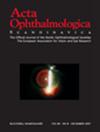Early vitrectomy in the management of diabetic macular oedema
Abstract
Diabetic macular oedema (DMO) poses a significant challenge in the management of diabetic retinopathy (DR), contributing to substantial visual impairment in diabetic patients. Over the years, vitrectomy has emerged as a valuable surgical approach in the armamentarium against DMO, and has evolved to play a pivotal role in addressing cases refractory to conventional therapies, either as a standalone or as adjunctive therapy. The rationale behind this approach lies in the ability of vitrectomy to directly remove the vitreous scaffold, which is implicated in the pathogenesis of DMO via two basic mechanisms, the tractional and the biochemical.
Vitrectomy can eliminate both the anterior-posterior traction caused by the vitreous, and the tangential forces on the macula, caused by epiretinal membranes, both common contributors to DMO. Clearance of the vitreomacular interface alleviates the mechanical stress on the macula, leading to improvements in central retinal thickness and visual acuity. Furthermore, improved visualisation of the macula facilitates the monitoring and management of the DMO and the DR in the long term.
In terms of the biochemical component, vitrectomy can play a significant role in modulating oxygen consumption of the vitreous and alleviating retinal hypoxia. The vitreous humour serves as a conduit for oxygen diffusion to the avascular inner retina. In diabetic eyes, vitreous liquefaction and retinal vascular deficiency disrupt oxygen transport, exacerbating retinal hypoxia and promoting VEGF production and neovascularisation. Studies have shown that vitrectomy can increase the oxygen delivery to the retina and improve the perifoveal capillary blood flow. Oxygen is known to suppress VEGF, and thus reduce vascular permeability leading to DMO improvement. Moreover, recent studies have shown that removal of the vitreous reduces the levels of histamine, VEGF, and free radicals in the preretinal space. Additionally, the foveal avascular zone has been shown to decrease after vitrectomy, which might indicate a protective effect on DMO, similar to anti-VEGF injections.
However, the exact mechanisms by which vitrectomy may improve DMO are not yet fully understood, neither is the prognosis for post-operative visual improvement. The functional outcomes in different studies are very heterogenous and vary from significant vision gain to no improvement despite good anatomical results. The preoperative integrity of the external limiting membrane and the pre-existing damage to the outer retina often limit the outcome. Additionally, a subretinal fluid component of DMO seems to affect the visual prognosis, while the advantage of inner limiting membrane peeling, in the cases of non-tractional DMO, remains controversial, as there is no substantial data available to clarify its efficacy.
Finally, another significant factor is the time of intervention, as it seems that early vitrectomy in treatment-naive patients can offer better outcomes, and has been gaining ground among specialists.
In conclusion, vitrectomy offers a multifaceted approach in the management of DMO addressing both mechanical and biochemical pathways. Early intervention has shown significant advantages. Continued research and longer-term studies will further enhance our understanding and refine its therapeutic utility as a standalone and/or adjunctive treatment.

 求助内容:
求助内容: 应助结果提醒方式:
应助结果提醒方式:


